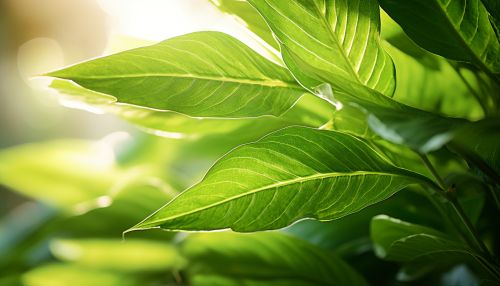The Science of Plant Signal Transduction Pathways
Introduction
Plant signal transduction pathways are a series of complex processes that allow plants to perceive and respond to various environmental and developmental signals. These pathways involve the transmission of a signal from the cell surface to the nucleus, leading to a change in gene expression and ultimately, a physiological response. This article delves into the intricate science of plant signal transduction pathways, exploring the various types of signals, the components involved in these pathways, and how they function to ensure plant survival and growth.
Types of Signals
Plants perceive a wide array of signals, both from their internal and external environment. These include light, temperature, gravity, water availability, nutrient availability, and signals from other organisms, such as pathogens and symbionts. Each of these signals can trigger a specific response in the plant, mediated by a unique signal transduction pathway.


Components of Signal Transduction Pathways
Plant signal transduction pathways typically involve three main components: a receptor, a series of signal transducers, and a response regulator.
Receptors
Receptors are proteins located on the cell surface or within the cell that bind to specific signal molecules. This binding event triggers a change in the receptor's conformation, initiating the signal transduction pathway.
Signal Transducers
Signal transducers are proteins that transmit the signal from the receptor to the response regulator. This is often achieved through a series of protein-protein interactions and post-translational modifications, such as phosphorylation.
Response Regulators
Response regulators are proteins that bring about the final response to the signal. This is typically achieved by altering gene expression, although other mechanisms, such as changes in protein activity or cellular localization, can also be involved.
Signal Transduction Mechanisms
There are several mechanisms through which signals can be transduced in plants. These include phosphorylation cascades, calcium signaling, and G protein-coupled signaling.
Phosphorylation Cascades
Phosphorylation cascades are a common mechanism of signal transduction in both plants and animals. In these cascades, the activation of a receptor leads to the phosphorylation and activation of a series of downstream proteins, ultimately leading to a change in gene expression or protein activity.
Calcium Signaling
Calcium signaling is another common mechanism of signal transduction in plants. In these pathways, the binding of a signal molecule to a receptor triggers an increase in the concentration of calcium ions in the cytoplasm. This increase in calcium concentration can then activate various calcium-binding proteins, leading to a change in gene expression or protein activity.
G Protein-Coupled Signaling
G protein-coupled signaling pathways involve the activation of a G protein by a receptor, which then activates a series of downstream proteins. These pathways are less common in plants than in animals, but they are still important for certain processes, such as the response to light and hormones.
Role in Plant Development and Survival
Plant signal transduction pathways play a crucial role in plant development and survival. They allow plants to perceive and respond to various environmental and developmental signals, ensuring their survival and growth. For example, signal transduction pathways enable plants to respond to changes in light availability, allowing them to optimize their photosynthetic efficiency. They also allow plants to respond to pathogen attack, triggering the activation of defense responses.
Conclusion
Understanding the science of plant signal transduction pathways is crucial for improving crop productivity and sustainability. By manipulating these pathways, scientists can develop crops that are more resistant to pests and diseases, more tolerant of adverse environmental conditions, and more efficient in their use of resources. As such, the study of plant signal transduction pathways is not only fascinating from a scientific perspective, but also of great practical importance.
